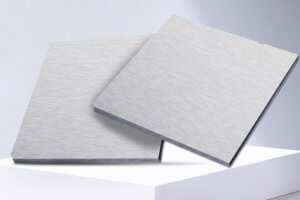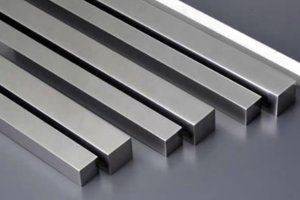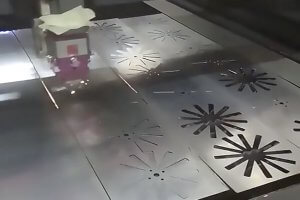Introduction
Riveting is one of those processes people often take for granted. I’ve seen it used in aircraft panels, metal furniture, elevator enclosures, HVAC ducting, and even on high-end kitchen cabinets. It’s reliable, fast, and usually cheap. But here’s the catch—riveting is only as good as the parts you’re joining.
That’s a lesson I learned the hard way. Early in my career, I was managing a small sheet metal shop where we were constantly chasing cosmetic defects, misaligned parts, and weak joints. At first, we blamed the rivet guns. Then the rivets. Then the operators. Only later did we realize: the problem started long before the riveting gun came out—on the CNC machine.
This article is all about that turning point. I’ll walk you through what I’ve learned from managing CNC-prepped riveting operations and show you how getting things right during machining sets the stage for rock-solid, repeatable, and clean riveting.
If you’ve been struggling with loose rivets, ugly seams, or unexpected failures, I’m willing to bet your machining process is at least partly to blame. Let’s fix that.
Common Riveting Challenges: What Goes Wrong and Why
If you’ve ever worked in production or assembly, you’ve seen these problems up close. Maybe you didn’t think they had anything to do with machining. I used to think the same.
But here’s the truth: most riveting problems don’t start at the press—they start at the drill.
Let me break down the most common issues we ran into and what caused them:
⚠️ Most Common Riveting Issues and Root Causes
| Problem Type | Frequency (per month) | Root Cause | Production Impact |
|---|---|---|---|
| Misaligned holes | 30–40 | Manual layout, inaccurate jigs | Rework, scrap, assembly delays |
| Inconsistent hole diameter | 20–25 | Worn drill bits, hand drilling | Loose rivets, weak joints |
| Visible gaps after joining | 15–20 | Bad fit-up, warped parts | Cosmetic rejection |
| Popped rivets post-test | 5–10 | Oversized holes, poor clamp force | Structural failure, returns |
| Off-center rivet heads | 10–15 | Hole drift, slippage during drill | Quality complaints |
| Excess burr around holes | 20+ | No deburring or poor tooling | Aesthetic and safety issues |
I pulled this data from our job tracking system back when I was troubleshooting a quality crisis in a 6-person custom enclosure shop. The data was painful to collect—but eye-opening.
Every single issue on that list had one thing in common: they were made worse—or even caused—by bad hole prep.
CNC Machining as the Foundation for Good Riveting
So what changed?
We invested in better CNC prep. Not expensive equipment—just smarter setups, better training, and tighter tolerances. And it worked. Our defect rate dropped by more than 50% in two months. The riveting process suddenly felt… easy.
Let me explain why CNC machining makes such a huge difference in riveting performance. There are four major benefits you can get immediately by tightening up your hole prep.
3.1 Precision Hole Placement
Rivets need to go in a straight line. That’s obvious. But you’d be surprised how often holes drift when drilled by hand or with imprecise templates.
Even a 0.3mm offset can cause rivets to shear under load or sit at an angle. With CNC machining, we were able to bring positional tolerances down to ±0.05mm, which gave us consistent spacing across large panel assemblies.
Here’s how spacing consistency changed in our shop when we switched to CNC:
| Metric | Manual Drilling Avg. | CNC Drilling Avg. |
|---|---|---|
| Hole-to-hole spacing error | ±0.35mm | ±0.05mm |
| Alignment rejection rate | 18% | 2% |
| Assembly time per part | 14 mins | 9 mins |
| Cosmetic complaint rate | 12/month | 1–2/month |
Our riveting line finally stopped feeling like a game of Tetris with metal.
3.2 Consistent Hole Diameter and Deburrin
Rivets don’t like surprises. A hole that’s too tight deforms the part. A hole that’s too loose leads to a weak connection. What makes CNC different is how consistently it holds that perfect size.
We used to see variation as high as ±0.2mm on hole diameters when drilling manually. That dropped to ±0.03mm with our CNC router. That alone solved a lot of our loose joint problems.
Plus, CNC lets you program chamfers or countersinks—and that’s huge. It eliminates burrs and helps rivet heads seat flush. In critical applications, we even tuned the angle for better fatigue performance.
3.3 Built-In Alignment Features
Here’s where CNC goes beyond just drilling holes.
We started using the CNC to cut tiny alignment slots, tabs, and pockets. These didn’t take much extra time to program, but they made a massive difference. Parts clicked into place. No more measuring, sliding, adjusting.
That saved us hours per week in labor and made the rivet lines almost perfect—visually and structurally.
3.4 Material-Specific Strategies
Different materials behave differently under the rivet gun. We work with aluminum, stainless steel, and glass fiber composite. Each one reacts to stress and deformation in a unique way.
CNC allowed us to fine-tune our cut settings—feed rates, spindle RPM, tool geometry—to minimize cracking, warping, or edge distortion during riveting.
When we ran trials with three materials using CNC-prepped holes, this is what we found:
| Material | Manual Hole Failure Rate | CNC Hole Failure Rate | Notes |
|---|---|---|---|
| Aluminum 5052 | 20% | 3% | CNC improved roundness |
| Stainless 304 | 12% | 1% | Better finish, no work hardening |
| Glass Fiber Comp | 25% | 4% | CNC reduced edge delamination |
Designing for CNC-Enhanced Riveting
When people talk about “Design for Manufacturing” or DFM, they usually mean reducing complexity or cost. But not enough designers think about how design choices affect riveting—especially when CNC machining is involved.
I’ve worked on both the CAD and shop floor side. And from that perspective, I’ve learned that if your parts aren’t designed with riveting in mind, no amount of CNC precision will save you from headaches down the line.
So in this chapter, I’ll break down the essential design principles that make CNC + riveting a winning combo.
4.1 Hole Spacing and Edge Distance
The first thing you want to think about is spacing. Rivet holes that are too close together—or too close to the edge—can cause cracking, bulging, or even total joint failure under load.
Here’s a simple rule of thumb I follow:
- Hole spacing (center-to-center) should be at least 3x the diameter of the rivet
- Edge distance (from hole center to part edge) should be at least 2x the diameter
CNC helps because it can consistently hold those distances, even on curved or angled surfaces. But you need to model those dimensions right in CAD first.
I once had a customer submit a panel design with holes just 1.2mm from the edge—for 3mm rivets. The rivets pulled right through during vibration testing. We updated the drawings, ran them again, and the failure rate dropped to zero.
4.2 Rivet Patterns and Load Paths
If your parts will experience dynamic loading—vibration, shock, torque—you need to think about how load travels through the riveted area.
Even spacing in a grid might look good, but if the load concentrates along one edge, that’s where fatigue will start.
I’ve worked on battery enclosures where we changed the rivet layout from a basic 4-corner square to a staggered arc pattern, based on load simulations. With CNC, we could place those holes exactly where needed. Fatigue cracks went from 15% of parts down to less than 2%.
4.3 Pilot Holes, Alignment Tabs, and Jigs (or Lack Thereof)
One of the best things about CNC is that it lets you design out the need for jigs.
Instead of relying on operators to position parts perfectly, you can use laser-cut tabs, pilot holes, or dowel features machined right into the sheet or bracket.
Here’s a table that compares riveting performance in a few different assembly alignment methods:
| Alignment Method | Avg. Assembly Time | Visual Rework Rate | Rivet Line Straightness |
|---|---|---|---|
| Manual + Tape Measure | 12 min | 20% | +/- 2.5mm |
| Fixture-Based (Jigs) | 9 min | 10% | +/- 1.2mm |
| CNC Alignment Features | 7 min | 2% | +/- 0.3mm |
Using CNC to guide assembly was one of the best investments we made. We saved time, improved consistency, and reduced our dependence on skilled labor.
4.4 Surface Flatness and Nesting
Flatness isn’t just for aesthetics. Uneven surfaces cause rivets to pull at weird angles, creating uneven pressure and potentially premature failure.
When designing for CNC machining and riveting, I always try to:
- Avoid compound curves in riveted zones
- Add small nesting pockets to help mate curved parts
- Ensure that any bent features are flattened before riveting
One time we were getting bulging rivet heads on a series of stainless panels. Turned out the problem was subtle bowing from laser cutting. We switched to CNC routing + flattening tabs, and rivets sat flush every time.
4.5 CAD Model Best Practices for Riveting
If you’re building parts in SolidWorks, Fusion 360, or Inventor, I recommend these simple practices:
- Name and isolate all rivet hole features in separate sketches or folders
- Include center marks and hole callouts (diameter, chamfer, tolerance)
- Clearly mark alignment or pilot features with construction lines
- Add notes for chamfer angles in your 2D drawings, especially for countersunk rivets
These sound minor, but they help your machinist or CAM programmer understand your intent—and avoid bad assumptions.
When everyone is on the same page, riveting becomes predictable.
4.6 Involving Machinists Early in the Design
Last but not least: talk to the people making your parts.
When we brought our CNC operator into the early design reviews, we avoided so many downstream issues. He’d catch things like unreachable drill angles, blind hole interference, or inefficient nesting layouts.
I remember one case where we added an extra pilot slot that shaved a full minute off each panel’s assembly time. That saved us almost 20 hours across a 500-part batch. Just from one 3mm tab.
Case Study: Precision Sheet Metal Fabricator
A few years ago, I worked with a mid-sized precision sheet metal shop in the Midwest. They handled everything from telecom enclosures to aerospace brackets. One day, the production manager reached out with a problem:
“We’re spending too much time fixing riveted panels. The rivets are popping, misaligned, or worse—just plain ugly.”
I visited their facility and saw it with my own eyes. Skilled assemblers were doing their best, but they were constantly fighting poor fit-ups, oval holes, and alignment issues. One senior tech told me, “Sometimes you just pray the rivet goes in straight.”
So we ran a simple pilot: Take one product line, apply tight CNC machining standards on all mating parts, and compare the outcome to their usual process.
📦 Product Line Chosen:
19” rack-mount telecom enclosure, made from 1.2mm aluminum sheet, assembled with 4.8mm blind rivets.
5.1 Before CNC Process Optimization
Their original workflow involved:
- Flat pattern laser cutting
- Manual drilling of rivet holes on drill presses
- Jigs used for alignment (some well-worn)
- Manual deburring with files
This was the result over a 3-week period on 200 units:
| Metric | Value |
|---|---|
| Avg. Assembly Time per Unit | 19 minutes |
| Cosmetic Rejection Rate | 16% |
| Structural Rework Rate | 9% |
| Scrap Rate | 3% |
| Rivet Misalignment Complaints | Frequent |
| Operator Satisfaction (1–10 scale) | 4.5 |
Workers were frustrated. Quality control flagged multiple panels each day. And rework added nearly 12 hours per week to the schedule.
5.2 What We Changed
We didn’t invest in fancy robots. Just basic CNC workflow upgrades:
- CNC-routed holes with ±0.05mm tolerance
- Programmed chamfers at every rivet hole
- Added 0.5mm alignment notches at two corners per panel
- Switched from jigs to self-fixturing tabs
- Updated CAD models with proper hole spacing and edge clearance
- Added flatness control to prevent warping before riveting
The machinist didn’t need new equipment. Just better CAM files and tighter design inputs.
5.3 After CNC Optimization
After one month, here’s what the numbers looked like:
| Metric | Before Optimization | After Optimization |
|---|---|---|
| Avg. Assembly Time per Unit | 19 min | 12 min |
| Cosmetic Rejection Rate | 16% | 2% |
| Structural Rework Rate | 9% | <1% |
| Scrap Rate | 3% | <0.5% |
| Rivet Misalignment Complaints | Frequent | Rare |
| Operator Satisfaction (1–10 scale) | 4.5 | 8.2 |
5.4 Operator Feedback
I remember asking one of the guys, “How does it feel now?”
He laughed and said, “Feels like we finally got out of the 90s.”
The riveting process became smooth. No jigs. No eyeballing. Just clean, aligned, and consistent assembly.
They later rolled out the same CNC prep process to 6 more product lines. Rework costs dropped by over 40% in Q1.
5.5 ROI & Long-Term Impact
The shop didn’t spend thousands on automation. Just about 30 hours updating their CAD, CAM, and workflows.
Yet over the next year, they:
- Saved over 240 labor hours
- Reduced rivet-related customer complaints by 85%
- Increased on-time shipments for those products by 22%
Sometimes, the simplest improvements—tight hole placement, clean edges, smart design—create the biggest ripple.
Conclusion: CNC is the Hidden Partner in High-Quality Riveting
Here’s the simple truth I’ve learned over years of working with riveted assemblies:
You can’t get clean, consistent, high-strength riveting without precision machining.
That might sound obvious. But I can’t count how many times I’ve seen teams spend hours troubleshooting bad riveting results—replacing rivet guns, switching fastener suppliers, even blaming operators—when the real issue was the holes. The hole size, placement, burrs, surface condition, or just plain poor geometry.
Riveting, by nature, is a mechanical process that demands alignment and fit. If your parts aren’t consistent, your rivets won’t be either.
What CNC Really Brings to the Table
Let me recap the five biggest ways CNC machining supports better riveting:
- Tight, repeatable hole positioning
– No more misaligned rivet lines, no more trial-and-error assembly. - Controlled hole diameters and chamfers
– Rivets fit snug. Heads sit flush. No cracking, no play. - Material-sensitive prep
– Whether it’s soft aluminum or brittle composites, CNC lets you tune the process. - Self-aligning design features
– Tabs, slots, and pilot holes can eliminate jigs entirely. - Consistent flatness and finish
– Even surfaces = even pressure = stronger joints.
And all of this happens before you even load the first rivet.
My Perspective: CNC and Riveting Are Not Separate
I used to think of riveting and machining as two distinct phases. You cut the parts, then you put them together. Now I see it differently.
To me, machining and riveting are deeply connected. One sets the stage for the other.
When your CNC process is dialed in, riveting becomes a breeze. Your team spends less time adjusting, less time reworking, and more time moving product out the door. Your customers get cleaner finishes, tighter assemblies, and fewer surprises. Everyone wins.
The Cost of Ignoring CNC in Riveting
Let’s be honest: it’s easy to treat CNC machining as “just the cutting phase.” Especially in smaller shops where time is tight and teams are stretched.
But I’ve seen the cost of that shortcut:
- Higher rejection rates
- Slower assembly
- Operator frustration
- Customer complaints
And I’ve also seen what happens when you invest in tighter machining just for the sake of riveting:
- Faster throughput
- Stronger joints
- Better consistency
- Happier operators and happier clients
It doesn’t take much. A few changes in CAD. A couple tweaks in the CAM file. Better communication between design and production. And suddenly, riveting becomes reliable.
So What Should You Do Now?
If riveting is an important part of your product, here’s my honest advice:
- Audit your hole prep.
Are your rivet holes consistently sized and placed? Any burrs or deformation? If you’re not sure, inspect a batch and compare. - Work with your machinist.
They know what your CNC can do—and can’t. Loop them into the design phase earlier. - Design for alignment.
Use tabs, notches, or pilot holes. Avoid edge cases (literally). - Upgrade your CAM strategy.
Add chamfers, slow down plunge rates, and consider bit geometry based on material. - Track your before-and-after results.
Time your assemblies. Measure rejection rates. You’ll have hard numbers to justify the effort.
FAQ
1. Why is riveting quality inconsistent in my assemblies?
Most riveting quality problems begin before riveting starts. Issues like misaligned holes, burrs, or diameter variation from manual drilling often lead to weak joints, popped rivets, or cosmetic defects.
2. How does CNC machining improve riveting strength?
CNC machining ensures precise hole placement and diameter control. This consistency improves rivet expansion, clamp force, and joint integrity—especially for structural or fatigue-prone applications.
3. What is the ideal tolerance for rivet holes in CNC machining?
For most common riveting applications, a tolerance of ±0.05 mm or tighter ensures a snug fit without over-stressing the material. Exact tolerances depend on rivet type and material.
4. Should rivet holes be chamfered or countersunk?
Yes. Chamfering helps rivet heads seat flush, eliminates burrs, and reduces stress risers. CNC makes chamfering consistent and programmable, which improves the overall finish and performance.
5. How do I know if my riveting issues are caused by bad machining?
Check for burrs, oval holes, poor spacing, or inconsistent edge distances. If your holes vary from part to part, or your rivets shift during installation, machining is likely the root cause.
6. Can CNC help reduce rework or rejection in riveting processes?
Absolutely. CNC-prepped parts often result in fewer alignment problems, more consistent finishes, and dramatically lower rejection rates during QC checks.
7. What materials benefit most from CNC preparation before riveting?
All materials benefit, but especially:
- Aluminum (soft, prone to deformation)
- Stainless steel (hard, needs clean entry/exit)
- Composites (fragile, splinter easily without sharp tools and slow feeds)
8. Can CNC machines be used to create alignment features for riveting?
Yes. Features like tabs, notches, pilot holes, or shallow pockets can all be added during CNC machining to improve assembly accuracy without requiring jigs.
9. What’s the difference between interference-fit and clearance-fit rivet holes?
- Interference fit: Tight, slightly undersized holes that increase mechanical strength
- Clearance fit: Slightly larger holes for ease of insertion and fast installation
CNC helps hit both fits reliably, based on the design need.
10. How does riveting performance vary between hand-drilled and CNC-drilled holes?
| Attribute | Hand-Drilled Holes | CNC-Drilled Holes |
|---|---|---|
| Diameter tolerance | ±0.2–0.3 mm | ±0.05 mm |
| Hole position accuracy | ±0.5 mm or more | ±0.05–0.1 mm |
| Burrs / rough edges | Frequent | Rare (with proper tooling) |
| Assembly speed | Slower | Faster |
| Rework risk | High | Low |
11. Can CNC improve the cosmetic appearance of riveted panels
Yes. With better alignment and hole prep, rivet heads seat flush and line up neatly, which improves the visual quality of the finished product.
12. Do I need expensive equipment to implement CNC-enhanced riveting?
Not necessarily. Most improvements come from tighter tolerances, better CAM programming, and smarter part design—not from buying new machines.
13. How should I update my CAD files to support better riveting?
- Add chamfer features to rivet holes
- Define tight tolerances on hole diameters
- Avoid placing holes too close to edges
- Include alignment tabs or pilot features where possible
14. Can CNC machining reduce reliance on assembly jigs for riveting?
Yes. By building alignment features directly into the parts, you can often eliminate the need for separate jigs or fixtures, saving time and improving accuracy.
15. What kind of ROI can I expect from optimizing CNC for riveting?
Depending on your production volume, you may see:
- 30–50% reduction in rework
- Faster assembly times
- Improved product consistency Even small changes (like adding chamfers or tabs) can result in major cost and time savings over a full production cycle.
16. Are there standards for rivet hole sizing in CNC design?
Yes. You can refer to:
- ISO 15977 (for aerospace riveting)
- DIN 7337 (blind rivet standards)
- Manufacturer datasheets also specify hole sizes and tolerances for each rivet type.
17. Should I train my CAM programmer on riveting-specific best practices?
Yes. Small changes like spindle ramp-down before breakout or programmed deburring can make a big difference in the quality of rivet holes and final assembly.
Recommended Authoritative References
To support the knowledge in this article and help readers go deeper, here are 7 curated sources from trusted, educational, and standards-based platforms:
1. Wikipedia – Rivet
Provides a broad overview of rivets, their types, usage, and history. Useful for basic understanding of the riveting process.
🔗 https://en.wikipedia.org/wiki/Rivet
2. Wikipedia – Computer Numerical Control (CNC)
A detailed explanation of CNC machining, its core principles, and its role in automated precision manufacturing.
🔗 https://en.wikipedia.org/wiki/Computer_numerical_control
3. ISO 15977:2002 – Open End Blind Rivets with Break Pull Mandrel
International standard that defines the mechanical characteristics and application conditions of blind rivets.
🔗 https://www.iso.org/standard/29619.html
4. DIN 7337 – Blind Rivets Standard Overview (Fasteners.eu)
An overview of the DIN 7337 standard which covers break mandrel blind rivets commonly used in sheet metal assembly.
🔗 https://www.fasteners.eu/standards/DIN/7337/
5. NASA Technical Standard – NASA-STD-5020: Requirements for Threaded Fastening Systems
Though focused on threaded fasteners, this standard includes considerations for joint integrity relevant to riveting as well.
🔗 https://standards.nasa.gov/standard/nasa/nasa-std-5020
6. MIL-R-47196A – Military Standard: Rivets, Buck Type, Installation Procedures
A detailed U.S. military document specifying how buck-type rivets must be prepared and installed for mission-critical reliability.
🔗 https://www.rvplane.com/pdf/MIL-R-47196A_MI.pdf
7. Atlas Copco – Pocket Guide to Riveting Techniques (PDF)
Practical guide covering common riveting systems, installation tools, and quality control tips, especially in aerospace and industrial settings.
🔗 https://www.atlascopco.com/content/dam/atlas-copco/local-countries/spain/documents/Riveting_pocket_guide.pdf
Other Articles You Might Enjoy
- Types of Rivets: A Comprehensive Guide
Introduction: The Critical Role of Rivets in Multiple Industries Rivets are permanent mechanical fasteners that are critical in the assembly of everything from simple structures to complex machinery across numerous…
- Mastering CNC Drilling: Creating Exact Fits for Pull Through Rivets
CNC machining has become an essential part of modern manufacturing, offering unmatched precision and efficiency. One of the most critical aspects of CNC machining is drilling, particularly when creating holes…
- Custom Rivet Nut Manufacturing: Materials, Design & CNC Machining Explained
Chapter 1: Overview of Rivet Nuts I remember the first time I encountered a rivet nut. I was puzzled by its appearance and curious about how something so small could…
- Understanding Screw Head Types : Design, Standards, CNC Machining & Optimization
I. Introduction I’ve worked with many different screw head types throughout my career in manufacturing. I remember the first time I had to figure out why a certain screw head…
- Brass Screws Custom Machining Guide: Techniques, Tools, and Best Practices
Introduction Brass screws are among the most popular fasteners used across various industries due to their unique combination of aesthetics, corrosion resistance, and excellent machinability. If you're considering CNC machining…
- Custom Stainless Steel Screws with CNC Machining: Techniques, Tools, and Tips
Introduction I first realized how crucial Stainless Steel Screws are in CNC machining projects when I worked on a small manufacturing assignment.We needed durable, corrosion-resistant fasteners for an outdoor piece of equipment,…
- Choosing the Right Metal Fasteners: A Practical Guide for CNC Customization or Purchasing
Introduction: Why Metal Fasteners Matter in CNC Projects If you're involved in CNC machining or design, you've likely realized metal fasteners aren't just a small detail. They're often the deciding…
- Automotive Fasteners Manufacturing Guide: Precision, Strength & Industry Standards
I’ve spent a good part of my career exploring how Automotive Fasteners shape a vehicle’s overall safety and performance. I’ve personally toured manufacturing facilities, spoken with CNC operators, and tested…






